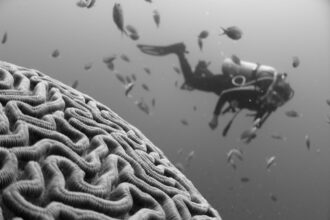Neuroplasticity is a fascinating concept that refers to the brain’s remarkable ability to reorganize itself by forming new neural connections throughout life. This adaptability is particularly significant in the context of trauma recovery. When you experience trauma, your brain can become wired in ways that perpetuate feelings of fear, anxiety, and distress.
However, understanding neuroplasticity empowers you to recognize that healing is possible. By engaging in specific practices, you can actively reshape your brain’s pathways, allowing for healthier responses to stress and emotional challenges. As you delve deeper into the relationship between neuroplasticity and trauma recovery, it becomes clear that your brain is not a static organ but rather a dynamic entity capable of change.
This means that even after experiencing significant trauma, you have the potential to rewire your brain for resilience and well-being. By embracing this understanding, you can cultivate a sense of hope and agency in your healing journey. The process may require time and effort, but the knowledge that your brain can adapt and heal is a powerful motivator for change.
Key Takeaways
- Neuroplasticity allows the brain to rewire and heal from trauma, leading to recovery.
- Mindfulness and meditation can help rewire the brain by promoting relaxation and reducing stress.
- Cognitive Behavioral Therapy (CBT) is effective in changing thought patterns and promoting positive mental health.
- EMDR is a powerful technique for processing traumatic memories and reducing their emotional impact.
- Neurofeedback can help regulate brain activity and improve overall mental well-being.
Mindfulness and Meditation for Rewiring the Brain
Mindfulness and meditation are potent tools for harnessing the power of neuroplasticity in your trauma recovery journey. By practicing mindfulness, you learn to focus your attention on the present moment without judgment. This practice can help you become more aware of your thoughts and feelings, allowing you to observe them rather than react impulsively.
As you cultivate this awareness, you create space for new, healthier thought patterns to emerge, effectively rewiring your brain. Meditation, on the other hand, offers a structured way to engage with mindfulness. Regular meditation practice has been shown to increase gray matter density in areas of the brain associated with emotional regulation and self-awareness.
As you meditate, you may find that your ability to manage stress improves, leading to a greater sense of calm and stability. Over time, these changes can contribute to a more resilient mindset, enabling you to navigate the challenges of trauma recovery with greater ease.
Cognitive Behavioral Therapy (CBT) for Changing Thought Patterns

Cognitive Behavioral Therapy (CBT) is a widely recognized therapeutic approach that focuses on identifying and changing negative thought patterns. If you’ve experienced trauma, it’s likely that certain beliefs about yourself or the world have been shaped by those experiences. CBT provides you with practical tools to challenge these distorted thoughts and replace them with more balanced perspectives.
By doing so, you can begin to alter the emotional responses that accompany those thoughts. Engaging in CBT involves working collaboratively with a therapist who guides you through the process of recognizing cognitive distortions and developing healthier thinking habits. This structured approach not only helps you understand the connection between your thoughts, feelings, and behaviors but also empowers you to take an active role in your healing journey.
As you practice these skills, you’ll find that your ability to cope with stressors improves, leading to a more positive outlook on life.
Eye Movement Desensitization and Reprocessing (EMDR) for Processing Traumatic Memories
| Metrics | Results |
|---|---|
| Number of sessions | 6-12 sessions on average |
| Success rate | Average success rate of 80-90% |
| Processing time | Processing traumatic memories can take 1-2 sessions |
| Side effects | Minimal side effects reported |
Eye Movement Desensitization and Reprocessing (EMDR) is a specialized therapeutic technique designed to help individuals process traumatic memories. If you’ve experienced distressing events, these memories can become stuck in your mind, leading to ongoing emotional pain. EMDR works by facilitating the reprocessing of these memories through guided eye movements or other forms of bilateral stimulation.
This process allows you to integrate traumatic experiences into your narrative in a healthier way. During an EMDR session, you’ll be encouraged to recall specific traumatic memories while simultaneously engaging in bilateral stimulation. This unique combination helps to reduce the emotional charge associated with those memories, making them less overwhelming.
As you work through this process, you may find that your relationship with the trauma shifts, allowing for greater emotional freedom and healing. EMDR has been shown to be effective for many individuals struggling with PTSD and other trauma-related issues.
Neurofeedback for Regulating Brain Activity
Neurofeedback is an innovative approach that utilizes real-time monitoring of brain activity to help you learn how to regulate your own brain function. By providing feedback on your brainwave patterns, neurofeedback allows you to gain insight into how different states of mind affect your emotional well-being. This technique can be particularly beneficial for individuals recovering from trauma, as it promotes self-awareness and self-regulation.
Through neurofeedback training, you’ll engage in exercises designed to enhance specific brainwave patterns associated with relaxation and focus. Over time, this practice can lead to improved emotional regulation and reduced symptoms of anxiety or depression. As you become more attuned to your brain’s activity, you’ll develop greater control over your mental state, empowering you to respond more effectively to stressors in your life.
Expressive Arts Therapy for Processing Emotions

Expressive arts therapy is a creative approach that allows you to explore and process emotions related to trauma through various artistic mediums. Whether it’s painting, drawing, music, or dance, engaging in expressive arts can provide a safe outlet for feelings that may be difficult to articulate verbally. This form of therapy encourages you to tap into your creativity as a means of self-discovery and healing.
As you immerse yourself in expressive arts therapy, you’ll find that the act of creating can be cathartic and liberating. It allows you to express complex emotions in a non-verbal way, facilitating a deeper connection with your inner self.
By integrating art into your healing journey, you’re not only fostering neuroplasticity but also nurturing your overall well-being.
Physical Exercise for Stress Reduction and Neuroplasticity
Physical exercise is a powerful tool for promoting both physical health and mental well-being. Engaging in regular physical activity has been shown to enhance neuroplasticity by stimulating the release of neurotrophic factors that support the growth of new neurons and synapses. If you’re recovering from trauma, incorporating exercise into your routine can significantly improve your mood and reduce stress levels.
When you exercise, your body releases endorphins—natural mood lifters that can help alleviate symptoms of anxiety and depression. Additionally, physical activity provides an opportunity for mindfulness as you focus on your body’s movements and sensations. Whether it’s going for a run, practicing yoga, or participating in team sports, finding an exercise routine that resonates with you can be an essential component of your trauma recovery journey.
Brainwave Entrainment for Relaxation and Healing
Brainwave entrainment is a technique that involves using rhythmic auditory or visual stimuli to synchronize brainwave activity with specific frequencies associated with relaxation or focus. This practice can be particularly beneficial for individuals recovering from trauma as it promotes a state of calmness and reduces anxiety levels. By listening to binaural beats or engaging with guided meditations designed for brainwave entrainment, you can facilitate a shift in your mental state.
As you explore brainwave entrainment techniques, you’ll likely notice an increase in relaxation and an enhanced ability to manage stress. This practice encourages a deeper connection between your mind and body, allowing for greater emotional regulation. Over time, incorporating brainwave entrainment into your self-care routine can support your overall healing process by fostering a sense of peace and well-being.
Sensory Integration Techniques for Reconnecting with the Body
Sensory integration techniques focus on helping you reconnect with your body after experiencing trauma. Often, traumatic experiences can lead to disconnection from bodily sensations as a protective mechanism. By engaging in sensory integration practices—such as grounding exercises or mindfulness-based body scans—you can begin to re-establish this connection and cultivate a sense of safety within yourself.
These techniques encourage you to pay attention to physical sensations, emotions, and thoughts as they arise in the present moment. By doing so, you’re not only fostering awareness but also promoting healing through self-acceptance and compassion. As you practice sensory integration techniques regularly, you’ll likely find that your relationship with your body becomes more positive and nurturing.
Social Support and Connection for Healing the Nervous System
Social support plays a crucial role in trauma recovery by providing a sense of belonging and connection. When you’re navigating the aftermath of trauma, having supportive relationships can significantly impact your healing journey. Engaging with friends, family members, or support groups allows you to share experiences and emotions in a safe environment, fostering resilience and understanding.
Building social connections also activates the body’s natural relaxation response, helping to regulate the nervous system. When you’re surrounded by supportive individuals who validate your feelings and experiences, it creates an environment conducive to healing. As you cultivate these connections, you’ll likely find that you’re better equipped to cope with stressors and navigate the complexities of trauma recovery.
Combining Neuroplasticity Techniques for Comprehensive Trauma Recovery
Incorporating various neuroplasticity techniques into your trauma recovery journey can create a comprehensive approach that addresses multiple aspects of healing. By combining practices such as mindfulness meditation, CBT, expressive arts therapy, and physical exercise, you’re not only enhancing neuroplasticity but also fostering holistic well-being. Each technique offers unique benefits that contribute to reshaping your brain’s pathways and promoting emotional resilience.
As you explore these diverse approaches, it’s essential to remain open-minded and patient with yourself throughout the process. Healing from trauma is not linear; it requires time and dedication. By integrating multiple techniques into your routine, you’re empowering yourself to take charge of your recovery journey while nurturing both your mind and body along the way.
Embrace this opportunity for growth and transformation as you work towards reclaiming your life after trauma.
In recent years, the understanding of neuroplasticity has significantly advanced the field of trauma recovery, offering new hope and techniques for individuals seeking healing. One such approach involves harnessing the brain’s ability to reorganize itself by forming new neural connections, which can be particularly beneficial for those recovering from trauma. For a deeper exploration of these innovative techniques, you can read a related article on neuroplasticity and trauma recovery techniques on Unplugged Psychology.
🧠 Your Trauma Is Rewiring Your Brain: Here’s How to Undo It | A Neuroplasticity & Somatic Guide
FAQs
What is neuroplasticity?
Neuroplasticity refers to the brain’s ability to reorganize itself by forming new neural connections throughout life. This allows the brain to adapt and change in response to experiences, learning, and trauma.
What are trauma recovery techniques based on neuroplasticity?
Trauma recovery techniques based on neuroplasticity focus on utilizing the brain’s ability to rewire itself in order to heal from trauma. These techniques may include mindfulness practices, cognitive behavioral therapy, eye movement desensitization and reprocessing (EMDR), and other forms of therapy that aim to rewire the brain’s response to trauma.
How do trauma recovery techniques based on neuroplasticity work?
These techniques work by targeting the brain’s neural pathways and helping to create new, healthier connections. By engaging in specific therapeutic practices, individuals can learn to reframe their thoughts and responses to trauma, ultimately leading to healing and recovery.
Are trauma recovery techniques based on neuroplasticity effective?
Research has shown that trauma recovery techniques based on neuroplasticity can be effective in helping individuals heal from trauma. These techniques have been shown to reduce symptoms of post-traumatic stress disorder (PTSD) and improve overall mental well-being.
Are there any potential drawbacks to using trauma recovery techniques based on neuroplasticity?
While trauma recovery techniques based on neuroplasticity can be effective, they may not work for everyone. Additionally, some individuals may find these techniques challenging or triggering, especially if they are not ready to confront their trauma. It’s important for individuals to work with a qualified therapist or mental health professional when engaging in these techniques.




